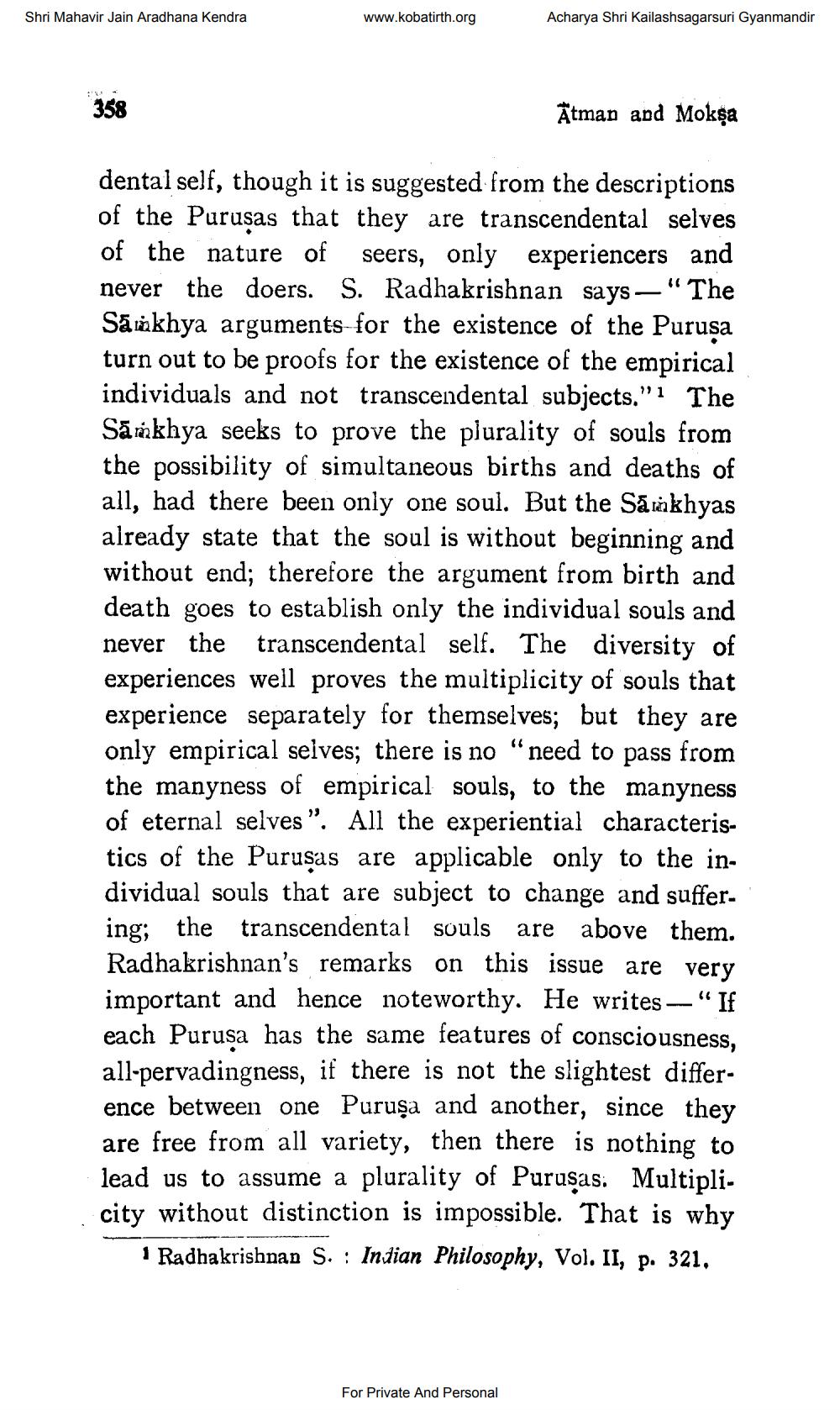________________
Shri Mahavir Jain Aradhana Kendra
www.kobatirth.org
Acharya Shri Kailashsagarsuri Gyanmandir
358
Ātmap and Moksa
dental self, though it is suggested from the descriptions of the Purusas that they are transcendental selves of the nature of seers, only experiencers and never the doers. S. Radhakrishnan says — "The Sankhya arguments-for the existence of the Purusa turn out to be proofs for the existence of the empirical individuals and not transcendental subjects."i The Samkhya seeks to prove the plurality of souls from the possibility of simultaneous births and deaths of all, had there been only one soul. But the Samkhyas already state that the soul is without beginning and without end; therefore the argument from birth and death goes to establish only the individual souls and never the transcendental self. The diversity of experiences well proves the multiplicity of souls that experience separately for themselves; but they are only empirical selves; there is no "need to pass from the manyness of empirical souls, to the manyness of eternal selves". All the experiential characteristics of the Purusas are applicable only to the individual souls that are subject to change and suffering; the transcendental souls are above them. Radhakrishnan's remarks on this issue are very important and hence noteworthy. He writes -- “ If each Purusa has the same features of consciousness, all-pervadingness, if there is not the slightest difference between one Puruşa and another, since they are free from all variety, then there is nothing to lead us to assume a plurality of Purusas. Multiplicity without distinction is impossible. That is why
1 Radhakrishnan S. : Indian Philosophy, Vol. II, p. 321.
For Private And Personal




